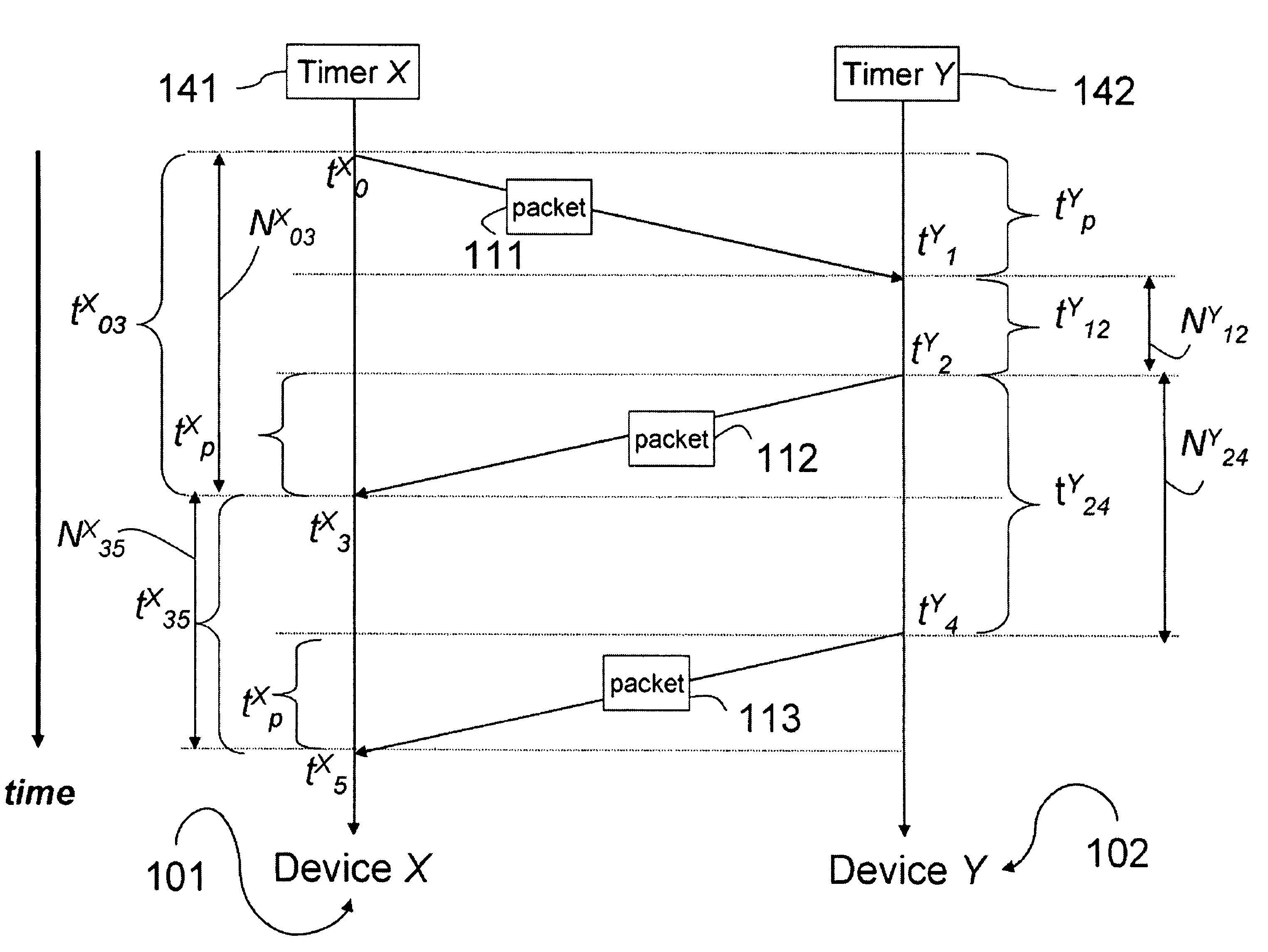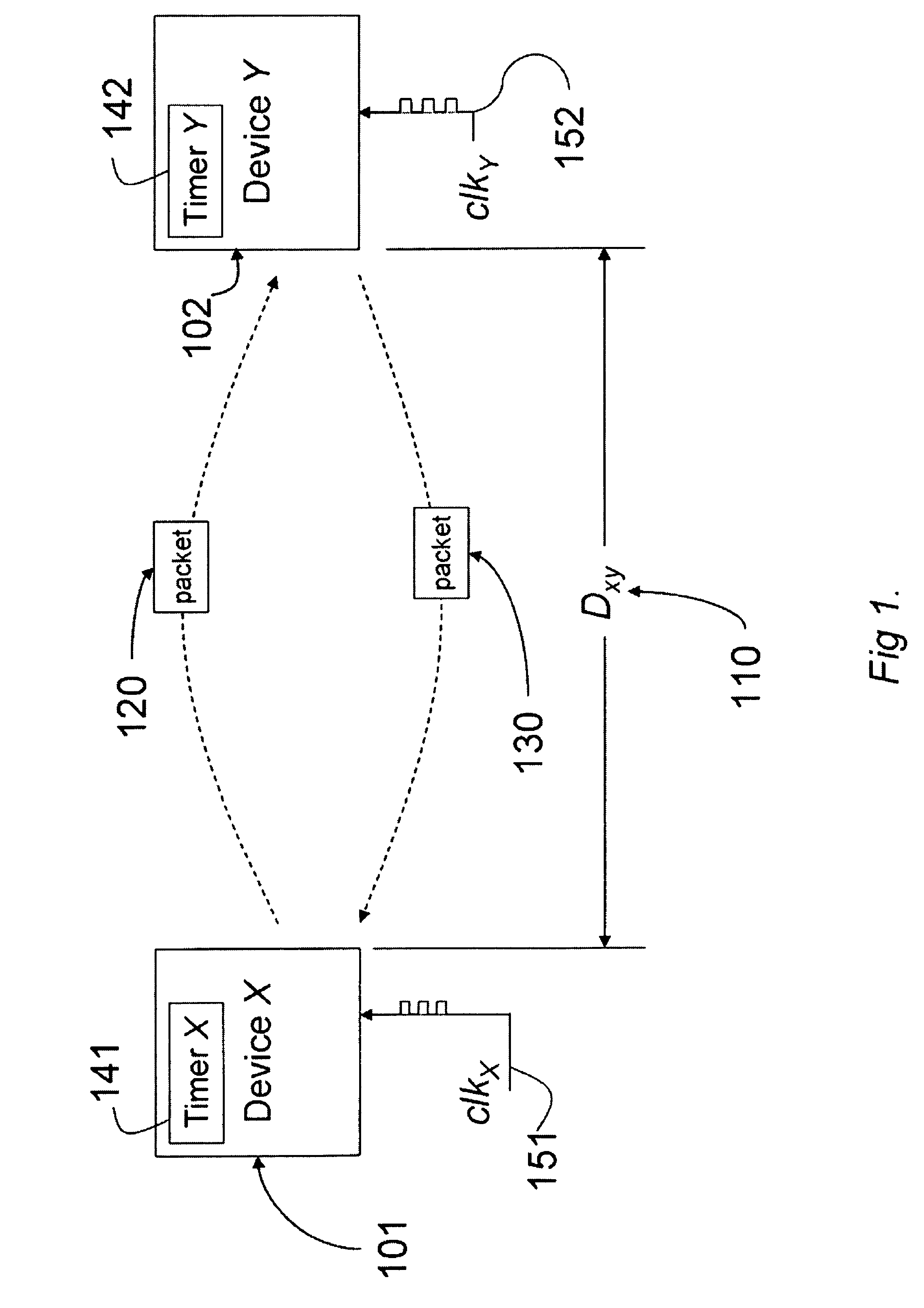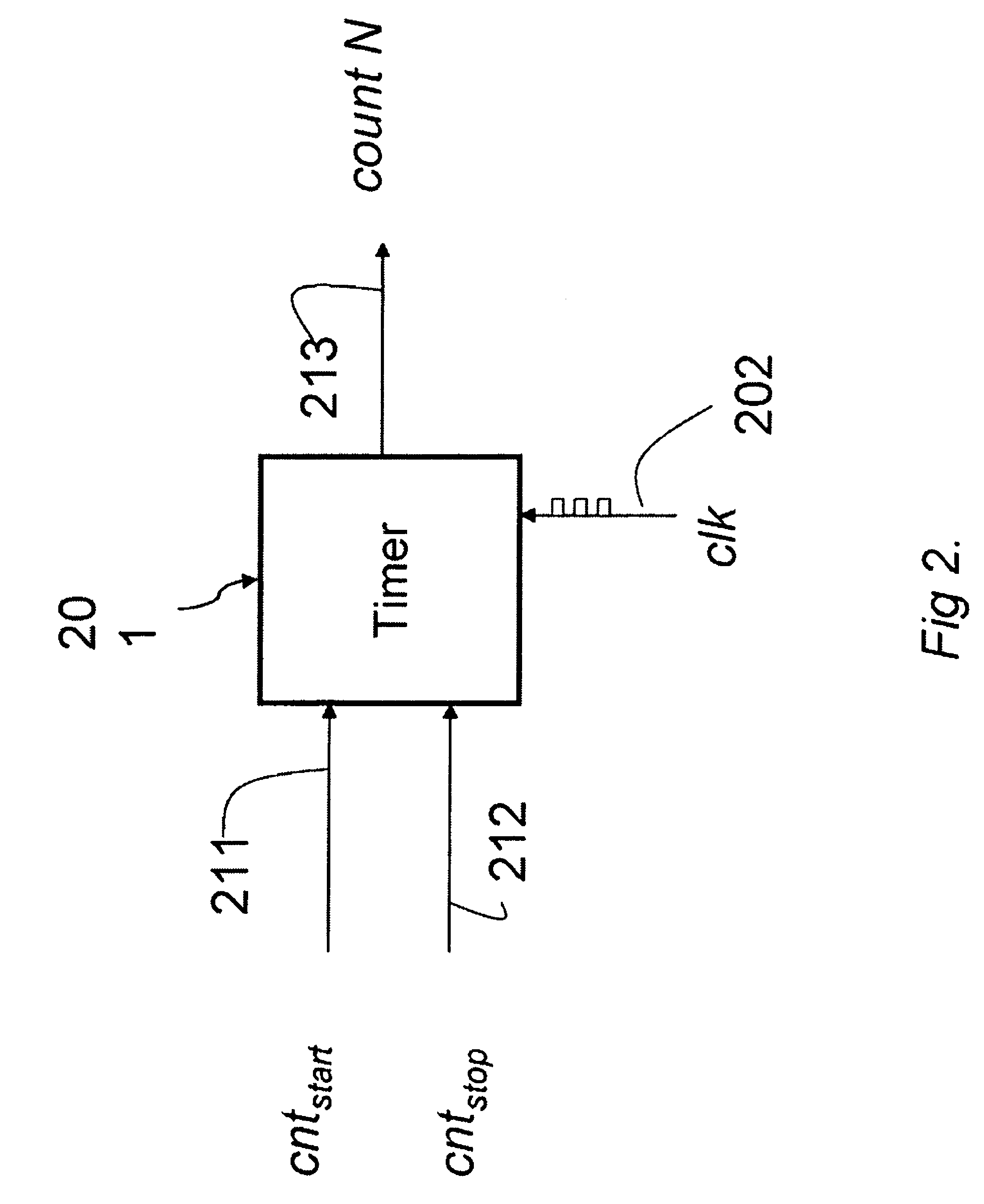Method for estimating relative clock frequency offsets to improve radio ranging errors
a technology of relative clock frequency offset and radio ranging error, applied in direction finders, directions using radio waves, instruments, etc., can solve problems such as 20 ns time error, acfo and/or rcfo introduce errors, and achieve the effect of minimizing range estimation errors
- Summary
- Abstract
- Description
- Claims
- Application Information
AI Technical Summary
Benefits of technology
Problems solved by technology
Method used
Image
Examples
Embodiment Construction
[0039]Wireless Ranging Devices
[0040]FIG. 1 shows wireless communication device X 101 and device Y 102 according to an embodiment of the invention. A distance between device X and device Y is DXY 110. Device X can transmit a data packet 120 to device Y, and device Y can transmit a data packet 130 to device Y. FIG. 1 also shows timer X 141 and timer Y 142, and clock signals clkX 151 and clkY 152. The timers count the clock signals. The timers are identical other than that count clock signals having different frequencies due to offsets from their nominal (design) frequency. A device may have multiple timers.
[0041]Timers
[0042]FIG. 2 generally shows a timer 201 operated according to a signal clk 202 having a nominal clock frequency fnorm. Of course, the nominal frequency is known at both devices. The time 201 forms the basis for timers 141-142.
[0043]The timer starts counting when a signal cntstart 211 is active (ON), and stops counting when cntstop 212 is active. The timer outputs a coun...
PUM
 Login to View More
Login to View More Abstract
Description
Claims
Application Information
 Login to View More
Login to View More - R&D
- Intellectual Property
- Life Sciences
- Materials
- Tech Scout
- Unparalleled Data Quality
- Higher Quality Content
- 60% Fewer Hallucinations
Browse by: Latest US Patents, China's latest patents, Technical Efficacy Thesaurus, Application Domain, Technology Topic, Popular Technical Reports.
© 2025 PatSnap. All rights reserved.Legal|Privacy policy|Modern Slavery Act Transparency Statement|Sitemap|About US| Contact US: help@patsnap.com



